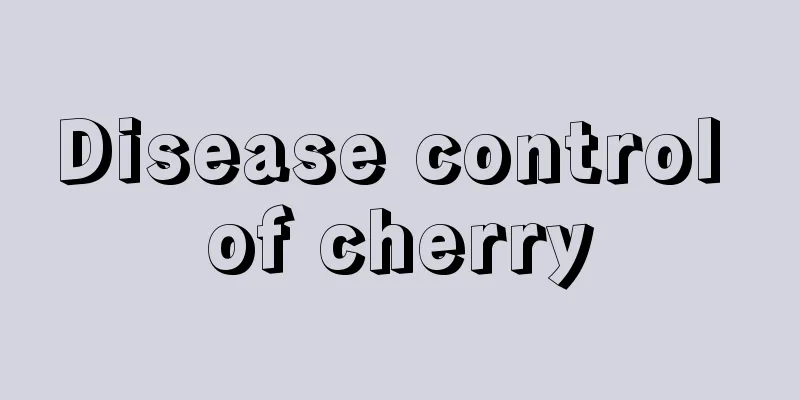Disease control of cherry

Prevention and control of cherry gummosisIn order to fully understand the prevention and control methods of hairy cherry gummosis, we must first start from its root cause and fully understand the cause of hairy cherry gummosis. Only by knowing ourselves and the enemy can we achieve victory in all battles. The most common cause of hairy cherry gummosis is frost damage, including frostbite of hairy cherry caused by cold, and frost damage and hail damage from natural disasters. The direct cause of these two is also frost damage. The larger the hail and frost, the lower the outdoor temperature, which will cause the gummosis of hairy cherry. Another very important factor is that in the breeding process, too much or too little water or too much or too little fertilizer will cause hairy cherry to suffer from gummosis. Therefore, the prevention and control methods are relatively simple. In normal times, we should strengthen water and fertilizer management, remember to keep the hairy cherry warm in cold weather, and concentrate on maintenance to easily prevent the gummosis of hairy cherry. Prevention and control of hairy cherry leaf blightLeaf blight is a very common disease among plants, not only in hairy cherries, but also in other plant groups. Leaf blight is not easy to be detected in the early stage of the disease, and is often noticed by people in the middle stage of the disease. In the early stage of leaf blight, there will be small brown spots on the leaves of hairy cherries, which are scattered and relatively light in color. In the middle stage, the spots on the leaves of hairy cherries will become larger and larger, and the color will become very different, from the initial brown to a darker reddish brown, and begin to have a tendency to connect into one piece. In the later stage, large spots are connected together, and eventually the entire leaf will fall off. The prevention and control methods include picking out diseased leaves for treatment in winter, spraying appropriate medicines in spring to prevent the growth of pathogens, and strengthening water and fertilizer management to improve the immunity of the hairy cherry itself. Finally, if you really get this disease, there is no need to panic, just spray it with medicine immediately, and it will be fine in less than a month. |
<<: Check out the five fungicides commonly used in flowers
>>: A complete list of causes of flower diseases!
Recommend
How long is the growth cycle of Panax notoginseng?
Introduction to Panax notoginseng growth Panax no...
Which is more expensive, mung bean sprouts or soybean sprouts? How to tell the difference?
1. Which one is more expensive? In comparison, th...
Cultivation methods and precautions of purple flowers
1. Soil For cultivation, soil with good air perme...
How to grow jasmine well
1. Suitable soil If you want to grow jasmine well...
Identification method of red sandalwood
Density discrimination According to physical know...
When is the best time to plant mint seeds?
Mint seed planting time Mint is a perennial plant...
Cultivation methods and precautions of Aspidistra
1. Soil When growing Aspidistra, you must choose ...
Cultivation and management of Crape Myrtle
Soil selection for the cultivation of Red Cloud C...
How to grow gardenia in water
1. Proper lighting The hydroponic gardenia has th...
How to grow flying saucer melon
1. Maintenance methods 1. Temperature: It likes a...
What areas are suitable for growing snake fruit?
Delicious fruit planting conditions Red Delicious...
How much does coriander cost per pound (price introduction)
1. Price Introduction Its price is unstable. For ...
How to make a single succulent mage grow multiple heads (how to make a mage grow multiple heads)
It takes time for a mage to develop a multi-heade...
What is the best month to plant horseshoe
When to plant horseshoe It is generally suitable ...
The difference between bowl lotus and water lily
1. The difference between leaves The leaves of th...









